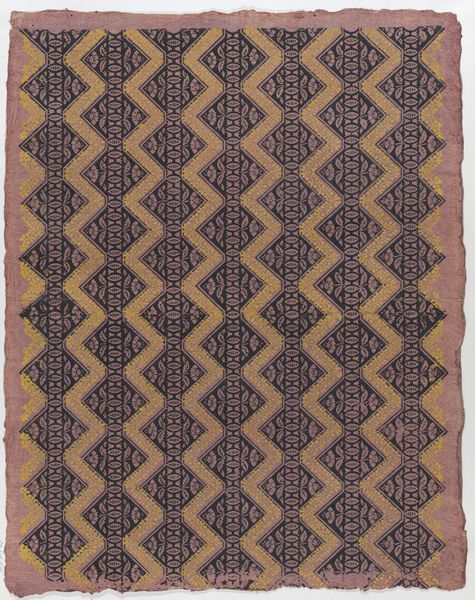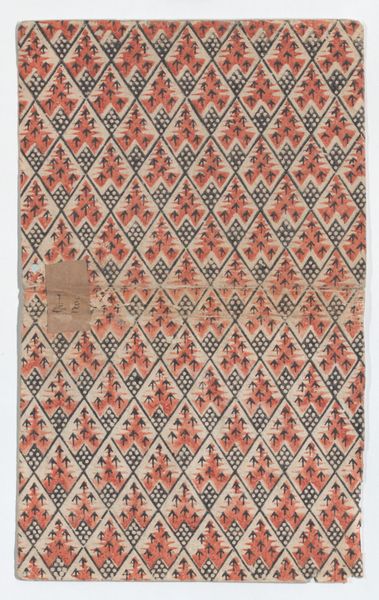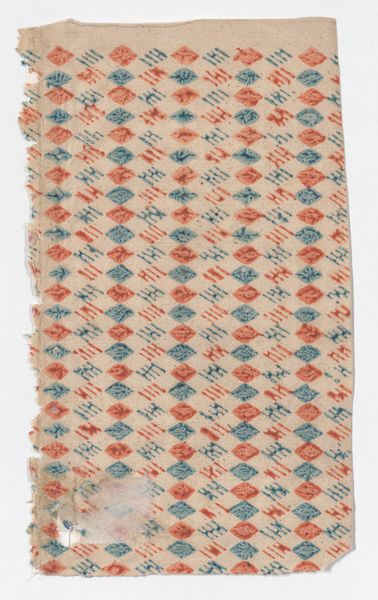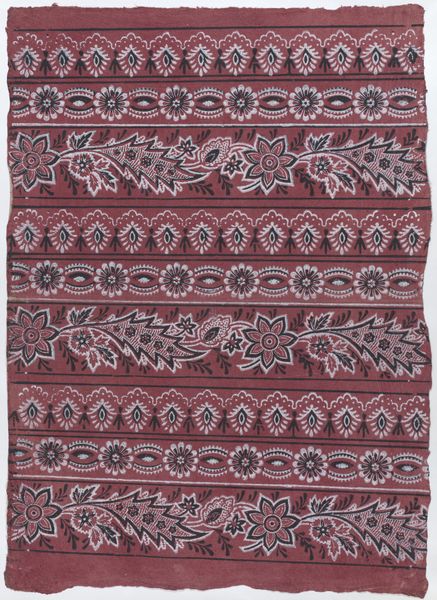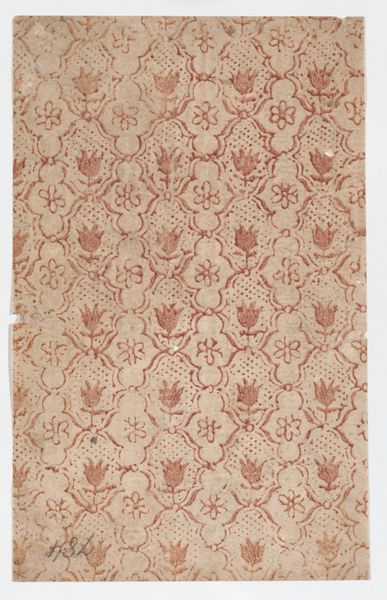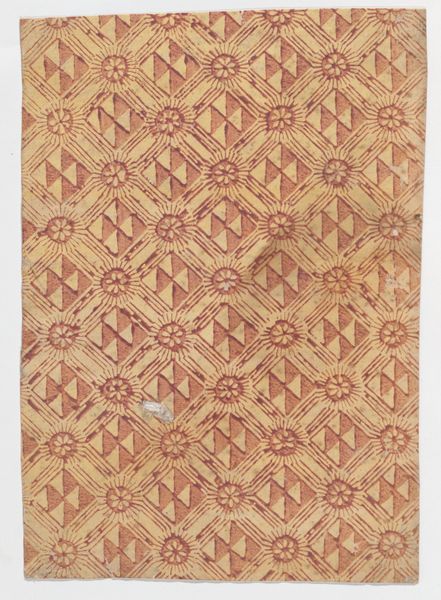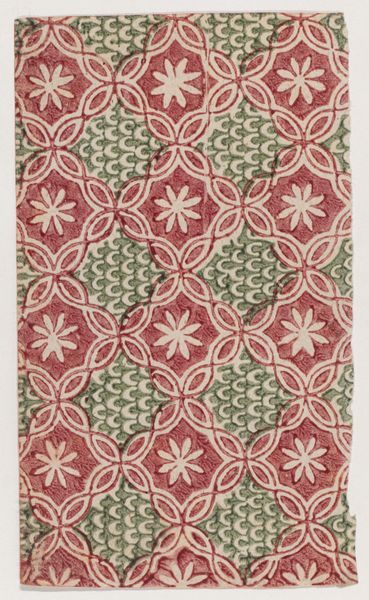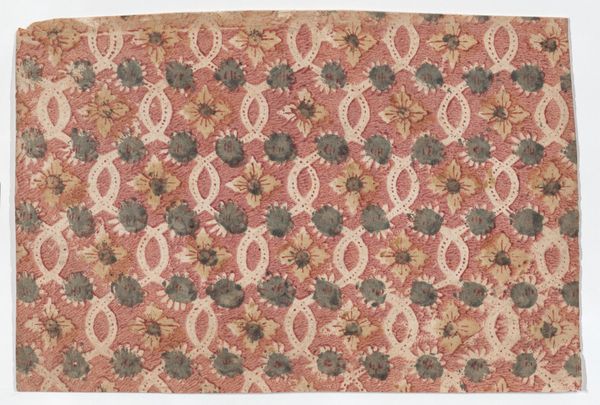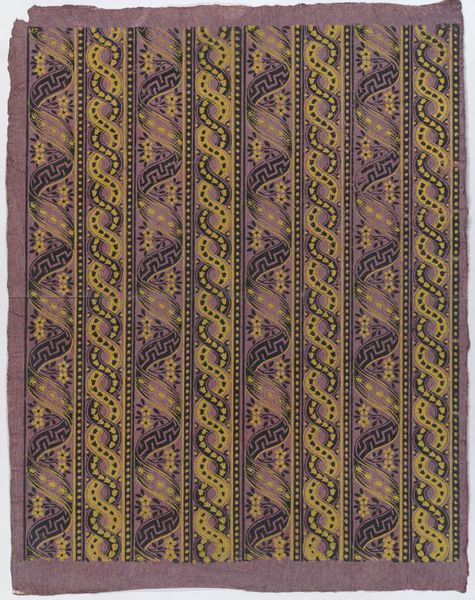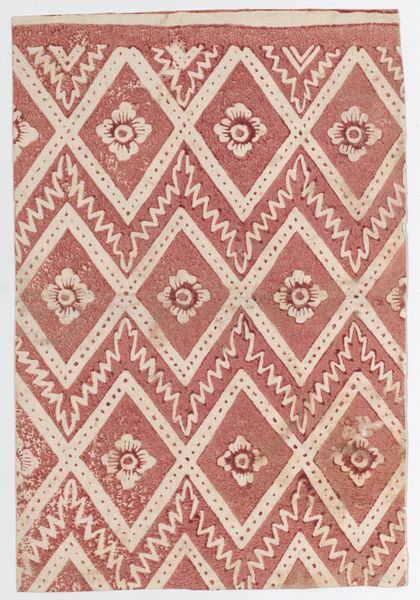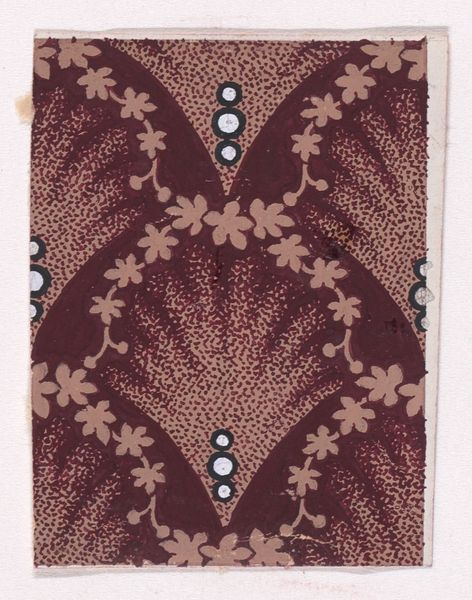
textile
#
pattern-and-decoration
#
naturalistic pattern
#
textile
#
pattern design
#
abstract pattern
#
organic pattern
#
repetition of pattern
#
regular pattern
#
pattern repetition
#
textile design
#
decorative-art
#
layered pattern
#
funky pattern
Dimensions: 16 × 14 1/8 in. (40.64 × 35.88 cm) (overall)
Copyright: Public Domain
Editor: Here we have a Fragment decorated with a lattice pattern, dating to the 19th century, artist is anonymous. It appears to be a textile of some kind. The overlapping floral and geometric forms are mesmerizing, almost like wallpaper. What do you see in this piece that might be hidden to the untrained eye? Curator: It’s intriguing, isn't it? This textile, while seemingly decorative, exists within a fascinating historical context. The 19th century witnessed a surge in Orientalism in the West, fueling a hunger for art and design inspired by Asian cultures. Considering its Japanese influence, this "fragment" becomes less about pure aesthetics and more about the market for and consumption of Japanese aesthetics within the western market. Editor: So, you are saying that it has a distinct appeal because of the 19th century movement? Curator: Precisely! Think about how museums at that time collected and displayed such objects. This Fragment would have circulated within specific networks of connoisseurs, collectors, and designers, effectively shaping perceptions about Japanese design. I'm curious; does understanding its social and market contexts change how you feel about the work now? Editor: I guess so! It felt nice to look at something just because it was there, but it does bring another point that the object was created under particular intentions. Curator: Absolutely. It reveals how even seemingly benign patterns can be imbued with historical and social significance, raising critical questions about authenticity, cultural appropriation, and the politics of display. Editor: Wow, I wouldn't have even considered any of that by myself. Thank you so much for shedding light on the matter! Curator: My pleasure. It’s rewarding to re-evaluate how the politics of imagery still plays such a large role in the reception of art.
Comments
No comments
Be the first to comment and join the conversation on the ultimate creative platform.
